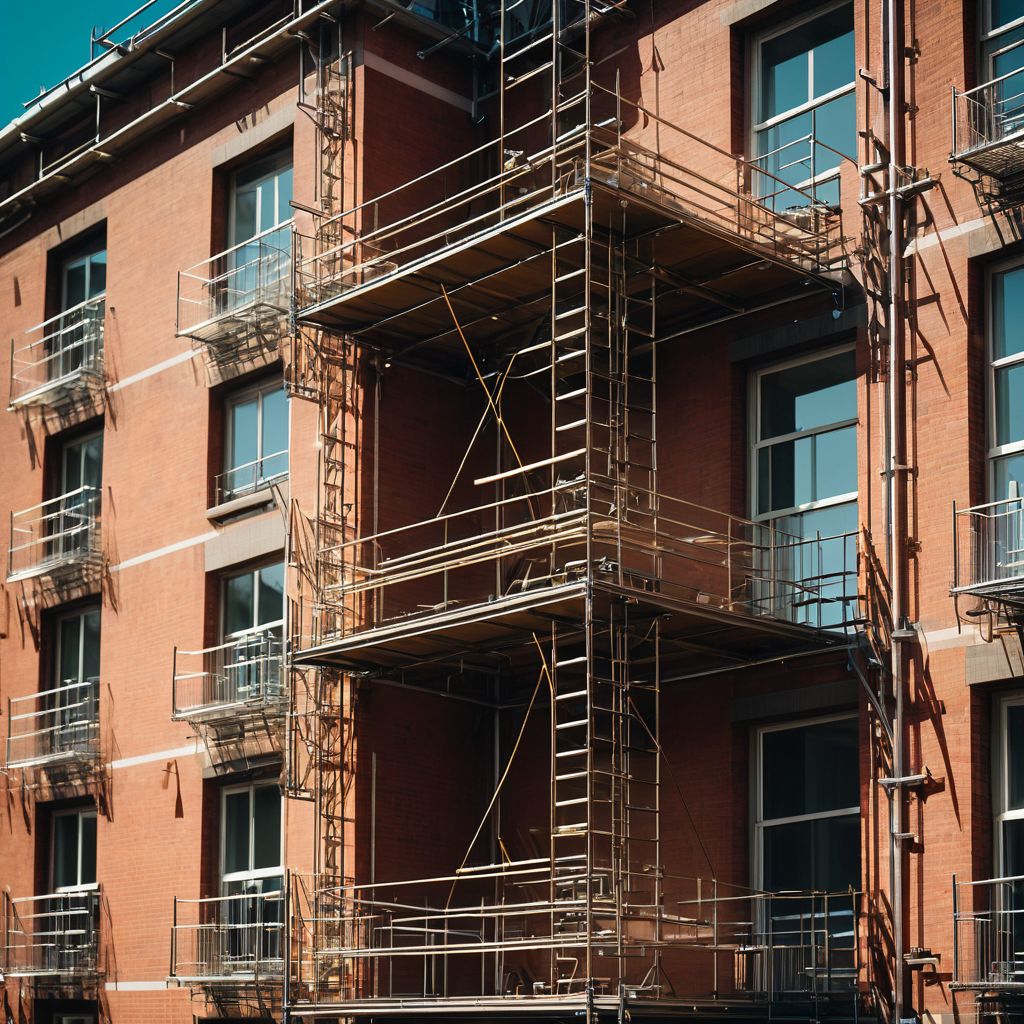
In the realm of residential construction, where every brick laid and every beam placed contribute to building dreams, scaffolding stands as an essential yet often underappreciated tool. Scaffolding, quite literally, provides the framework upon which construction workers stand to reach heights and areas that would otherwise be inaccessible or unsafe. Beyond its basic function of facilitating vertical access, scaffolding plays a crucial role in enhancing safety, efficiency, and the overall quality of construction projects.
Understanding Scaffolding
Scaffolding is a temporary structure erected around buildings or other structures to support workers and materials during construction, maintenance, and repair. It typically consists of metal pipes, tubes, and wooden planks arranged in a modular system that can be adjusted to different heights and configurations. The primary goal of scaffolding is to provide a stable and secure working platform for tradespeople to perform their tasks at various elevations.
Importance in Residential Construction
In the context of residential construction, scaffolding serves multiple indispensable purposes:
1. Safety Enhancement: Safety is paramount in any construction project. Scaffolding provides a secure platform for workers to perform tasks such as bricklaying, plastering, painting, and window installation at significant heights. With proper installation and adherence to safety protocols, scaffolding reduces the risk of falls and accidents, thereby ensuring a safer working environment.
2. Accessibility: Residential buildings often have intricate architectural designs and varying heights, making access a challenge without scaffolding. Whether it’s reaching upper floors for exterior finishing or accessing roof structures for repairs, scaffolding offers flexibility in height and positioning, allowing workers to navigate around the building efficiently.
3. Improved Productivity: Efficiency is crucial in meeting construction timelines and budgets. Scaffolding enables workers to access work areas quickly and reduces the time spent on setting up and dismantling temporary structures repeatedly. This efficiency translates into cost savings and faster project completion without compromising on quality.
4. Facilitating Trades: Different trades require different working conditions. Scaffolding can be adapted with specialized platforms, guardrails, and brackets to accommodate various tasks such as electrical work, plumbing, and HVAC installations. This versatility makes it an indispensable tool for coordinating multiple trades simultaneously on a construction site.
5. Quality Assurance: Beyond safety and efficiency, scaffolding contributes to the overall quality of construction by providing stable platforms for precise workmanship. Whether it’s aligning exterior cladding, installing windows symmetrically, or ensuring straight and level finishes, scaffolding allows for meticulous attention to detail that enhances the aesthetic and structural integrity of the residential project.
Types of Scaffolding Systems
Several types of scaffolding systems are commonly used in residential construction, each tailored to specific project requirements:
- Tube and Coupler Scaffolding: A versatile system using steel tubes and couplers that can be configured to various heights and shapes.
- Frame Scaffolding: Made of prefabricated frames and cross braces, suitable for low to medium-height projects like single-family homes.
- Mobile Scaffolding: Mounted on wheels for easy mobility, ideal for maintenance and tasks requiring frequent repositioning.
- Suspended Scaffolding: Hangs from the roof or other overhead structures, useful for façade work and window installation on tall residential buildings.
Conclusion
In essence, scaffolding is more than just a temporary structure in residential construction; it is the backbone that supports the entire building process. From enhancing safety and accessibility to improving productivity and ensuring quality, scaffolding systems are indispensable tools that enable construction professionals to work effectively and efficiently. As innovations continue to improve scaffolding design and materials, its role in modern residential construction remains pivotal, safeguarding workers and contributing to the successful completion of homes that families will cherish for years to come.
Cedar Hill St. Louis Jefferson County Olivette Kirkwood Ballwin Arnold Franklin County St Charles County Fenton High Ridge Dittmer Creve Coeur
